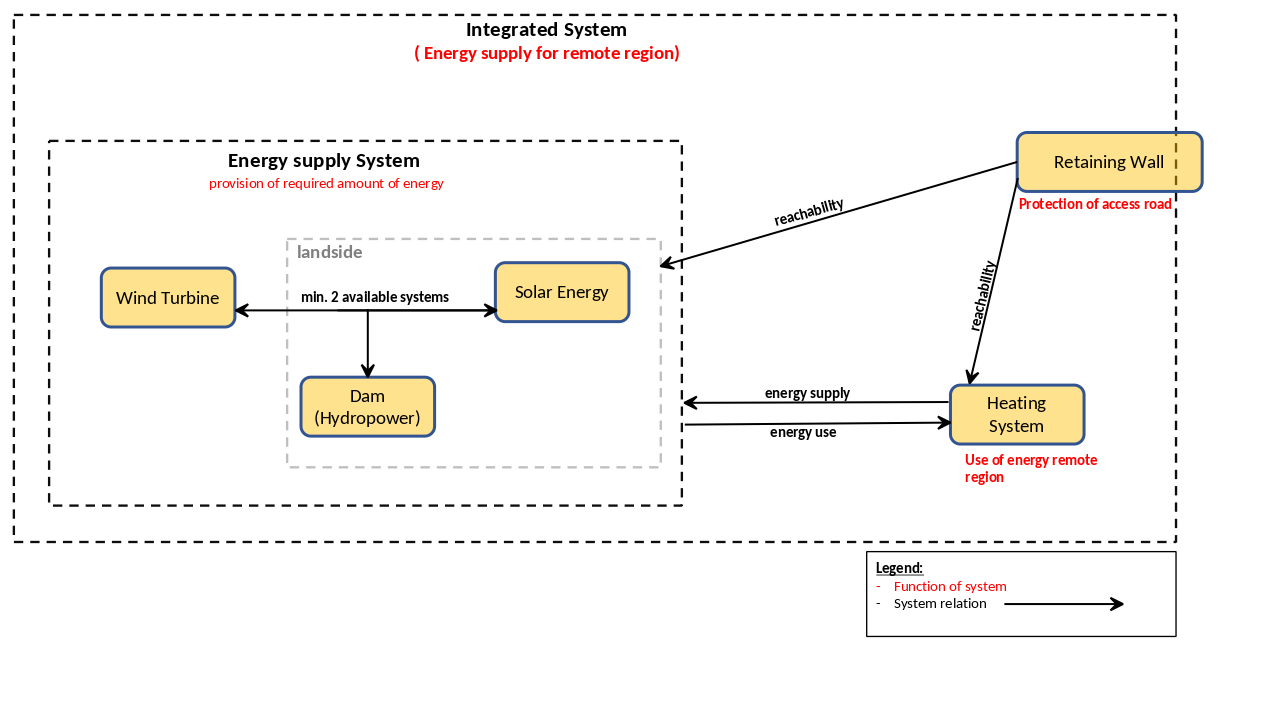Variable energy supply system in the remote region
In the case of energy development in new areas, where no single energy supply is sufficient (due to climatic or geographic conditions), the flexibility of energy production methods is of particular importance.
Especially remote regions can be affected if there is no good connection to the central energy supply. Independent energy supply systems are of even greater importance considering the current energy crisis, due to the war in Russia. They already exist in mountainous regions or on islands. In this integration context, we have developed the basic elements of the energy supply structure, which supplies a remote region. The system consists of three energy sources: photovoltaic, wind turbine and energy from hydroelectric power. The central heating system for the area consists of warm pumps and is powered by the generated electricity. It also provides warm water to the area. The retaining wall is securing an area of the access road leading to the remote region and their critical infrastructure.

The development of this integrated system context requires knowledge about the mutual influence of the systems. This is to clarify the importance of maintenance and assess not only monetary risks but also the risks of having a lack of electricity and therefore a lack of heat for the area. Downtimes of individual systems always have an influence on other subsystems. These influences have to be analysed in advance by showing individual relationships.
In our system, the energy supply is divided into three parts or can be carried out by three different systems. Our scenario foresees that always 2 power generation systems must be functional to provide the required amount of electricity. Accordingly, the interrelationships of the three systems affect the heating system. Without the functionality of at least two of the energy providers, the central heating station can not supply the area with enough heat. Therefore, there is also a significant relationship here. If there is more electricity produced than is needed for heating, it will supply the area directly with power. The retaining wall protects the access road and makes it unusable in case of failure. Therefore, the retaining wall has a direct relationship with the dam system and the photovoltaic systems, as they are located within the spatial zone of the remote region which can only be reached by the access road. The retaining wall also has a relationship with the Heating System, as it would not be usable without the access.
Individual Systems: